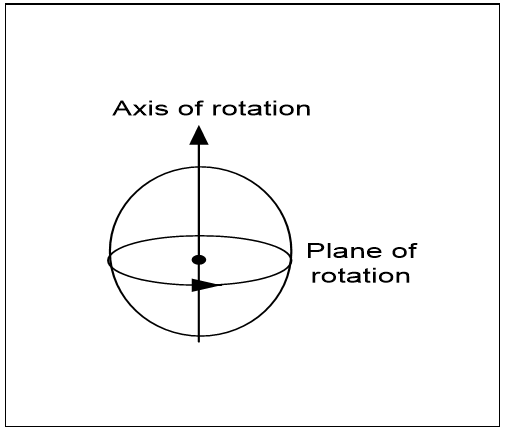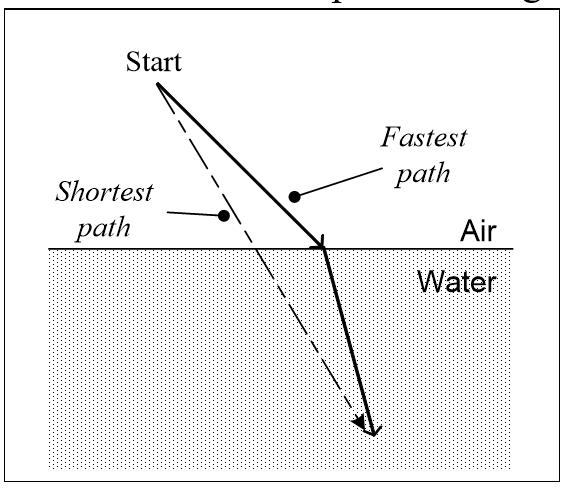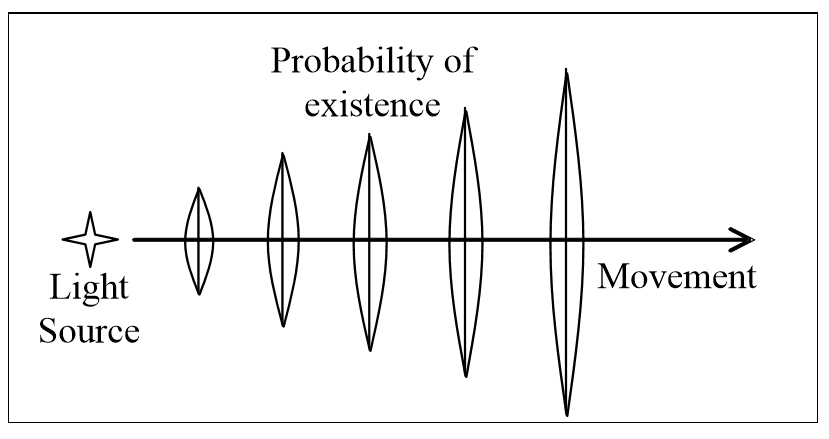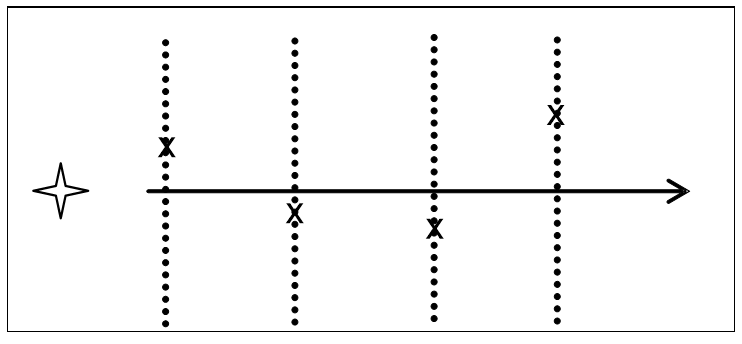What then decides where a photon hits a screen? The photon wave spreads to many screen points, but only hits one point. That point is random, like a lottery where everyone has a chance, but quantum theory says the hit chance is higher where the wave is stronger. More precisely, the photon’s probability to hit at each point depends on the square of its net amplitude there. These probabilities add up to one, so it always hits somewhere, but exactly where doesn’t depend on any physical history. Quantum theory then explains two-slit interference as follows:
1. The photon wave spreads through both slits.
2. It then interferes with itself to give a net amplitude at many screen points.
3. This amplitude squared is the photon’s probability to hit each point.
4. Where it actually hits is then randomly chosen from these probabilities.
5. The result is the interference pattern seen.
After the photon wave spreads through both slits, its positive or negative amplitudes combine at the screen to give a net strength whose square predicts its probability to hit there. Then a random value between zero and one decides where the photon actually hits, regardless of its physical history.
This predicts the interference pattern seen, but how can imaginary waves do this? If quantum waves are imaginary, are physicists like shamans who see the future in a dream? Real physics requires real quantum waves, and they can be if they are processing waves. When this wave overloads a screen, many points will reboot, to request a server restart, and the server response will be either:
1. Access. The server accepts the request to restart at that point, so it no longer supports the rest of the wave, which collapses. This then is a physical event at that point, OR,
2. No access. The server doesn’t respond that cycle because it is busy elsewhere, so the point just carries on. This then was a potential physical event that didn’t happen.
Quantum collapse is then a winner takes all lottery run by the server. When many instances overload many screen points, the reboot request that accesses the server wins the prize of being the photon, leaving the rest of the wave to wither on the grid. And just as in our lotteries, more tickets mean more chance of success, so points that access the server more frequently are more likely to restart it.
Quantum theory says that a photon’s probability to hit depends on its wave amplitude squared at each point. Light is a sine wave, so its amplitude squared is its power, which for a processing wave means more server access. If positive and negative amplitudes cancel at the server, the net power at each point decides the number of instructions needed, and hence server access. It follows that points where the wave has more power will access the server more, and so be more likely to restart it. The probabilities to hit of quantum theory are then based on the net amplitude squared because for a processing wave, that decides the server access that restarts it in a physical event. The strange logic of quantum theory then makes sense for a processing wave.
To recap, photon instances overload many screen points, but which one actually restarts the wave is to us unknown, i.e. random. Even so, the net wave power at each point defines access to the server, so it predicts the probability to restart there. The two-slit experiment can now be described as follows:
a. Photon wave instances spread through both slits.
b. Those that reach the same screen point by different paths interfere.
c. The first instance to restart the wave server is where the photon hits.
d. The wave power at each point predicts that because it decides server access.
The mysteries of Young’s experiment (3.1.3) are now resolved. How can a photon go through two slits but still arrive at one screen point? A particle can’t do this, but a processing wave spreading on a network can restart at a point. How can sending one photon at a time through two slits still produce an interference pattern? Again, a particle can’t go through two slits or interfere with itself, but a processing wave can. Why then does light come in little photon packets, as Einstein showed? Physical waves don’t come in packets, but processing needs a fundamental process, and that is a photon. Why doesn’t the photon wave smear over a screen as a wave would? A physical wave doesn’t hit at a point, but one process with one server restarts at one point as an all-or-nothing event.
A detector put in one of the two slits only fires half the time, but it isn’t because half the photons go through each slit. Every photon always goes through both slits, but each detector only wins the quantum lottery half the time, as the server is attending to other slit instances the rest of the time. Likewise, detectors in both slits fire equally often, but it isn’t because photon particles choose between the slits equally. Again, each photon always takes both slits but it can only restart in one, as decided by a server that attends equally to all its instances. This mechanism now answers questions like:
a. Does one photon go through both slits at once? Yes, photon instances go through both slits.
b. Does it hit the screen at one point? Yes, the whole photon process restarts at one screen point.
c. Did it take a particular path? Yes, the instance that restarted the photon took a specific path.
d. Did it also take all other possible paths? Yes, other instances, now disbanded, took every path.
Table 3.1 below compares Feynman’s summary of quantum mechanics (Feynman et al., 1977), p37-10 with a processing wave approach. Both approaches predict the same results, but the first is a recipe with no rationale, while the second is based on processing reasons. What made no sense fifty years ago now makes sense based on network processing.
We now consider another mystery of light that has baffled scientists for centuries.
Next
|
Table 3.1. Quantum mechanics in processing wave terms
|
|
Quantum Mechanics
|
Processing Wave
|
|
1. Existence. The probability a quantum entity exists is the absolute square of its complex quantum amplitude value at a point in space
|
1. Existence. The probability that a processing wave restarts in a physical event depends on server access that varies as the square of its amplitude at a point in space
|
|
2. Interference. If a quantum event can occur in two alternate ways, the positive and negative amplitudes combine, i.e. they interfere
|
2. Interference. If a processing wave reaches a point by alternate paths, the positive and negative amplitudes combine, i.e. they interfere
|
|
3. Observation. Observing one path lets the other occur without interference, so the outcome probability is the simple sum of the alternatives, i.e. the interference is lost
|
3. Observation. Observing a processing wave on one path lets the other occur without interference, so the outcome probability is the simple sum of the alternatives, i.e. the interference is lost
|




